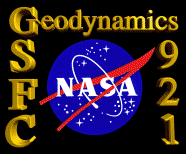


At a workshop on Hemispheres Apart: The Origin and Modification of the Martian Crustal Dichotomy held at the Lunar and Planetary Institute on September 30-October 1, 2004, Herb Frey described the evidence that the northern lowland plains are underlain by a very ancient, heavily cratered surface. The great age of this buried surface eliminates several previously suggested mechanisms for creating the lowlands (for example, by plate tectonic processes in middle Mars history). There exist a number of very large ancient impact basins, several of which appear to be "lowland-making" in that much of today's lowlands are within those basins. Frey argued that impact processes are more consistent with both the topography and the inferred relative age of the lowland basement than are most endogenic mechanisms so far proposed, which to date have not yet shown whether the 3-5 km of elevation difference can indeed by created by large scale degree 1 convection.

Buried impact basins are a significant part of the total crater population on Mars. Frey described how the total populations can be used to develop a time-line for major events in the early history of Mars, including the formation of the crustal dichotomy, the likely demise of the global magnetic field, and the time at which the largest impact basins formed. This was the subject of his paper at the Second Conference on Early Mars held at Jackson Hole, Wyoming on October 11-15. The recognition of a large population of buried impact basins even in the relatively well-preserved ancient "Noachian" highlands of Mars strongly suggests that a previously unrecognized "pre-Noachian" era needs to be added to the stratigraphic nomenclature.

The conference, which was very well organized by Steve Clifford (LPI) featured talks both by planetary scientists and specialists in early evolution of life on Earth. A field trip to hot springs in Yellowstone (example, above) provided a glimpse into a possible analog for habitable environments on early Mars.
![]() Back to Geodynamics Science Highlights
Back to Geodynamics Science Highlights
Responsible NASA official: Dr. Herbert Frey